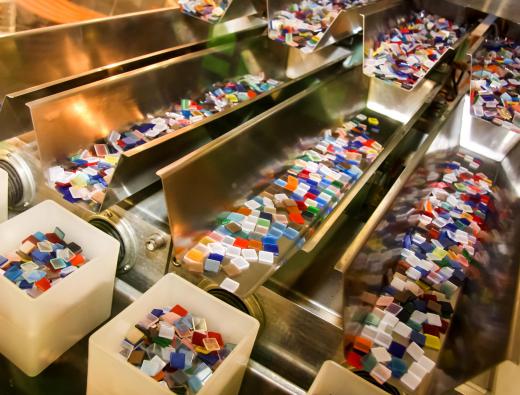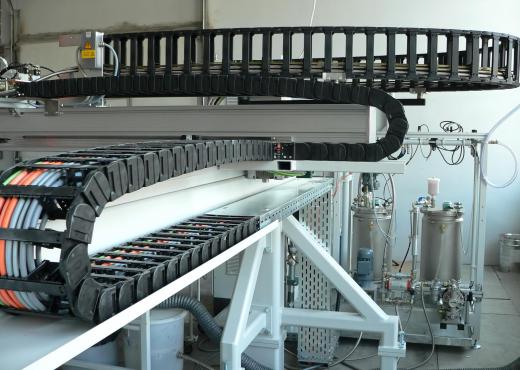It is typically necessary to consider your specific application, and identify a few different factors about the items you need to move, in order to select the best conveyor design. If you need to move powdered substances then an aeromechanical, vacuum, or pneumatic conveyor will usually be the best choice, though a vibratory design can also work well over distances of six feet (1.8 m) or less. Larger objects, such as boxes and pallets, are usually a good fit for a belted conveyor, though certain designs can also be well suited to loose substances as well. Regardless of the specific type you choose, you may also want to pay attention to some general aspects of conveyor design, such as flexibility, reliability, and energy efficiency.
There are many different types of conveyor designs, each of which can be best suited to one or more particular applications. Before you begin to search for a conveyor, you will first want to identify the type of design that will work best for your needs. If you need to move powders, chips, small parts, or other similar substances over relatively long distances, some type of tube conveyor will typically be the best choice. An aeromechanical conveyor is a design that can move powdered substances without the need for costly air filters, though pneumatic systems can be very versatile.

Bucket conveyors are another option that can be good for moving loose substances as well, especially heavy powders and small parts that do not require dust controls. Vibratory conveyor designs can also be a good choice if you need to move a variety of objects over relatively short distances, and they have very few parts to break down so maintenance is typically inexpensive. Belted conveyors are one of the more versatile systems, since they can cover long spans, move up and down inclines, and use cleats or other special belt designs to transport many different items.

Aside from choosing the right type of conveyor system, there are also a number of other general factors to look at when selecting the best conveyor design. One important factor is flexibility, which refers to how easy a design will be to modify if your needs change. It is often a good idea to select a modular conveyor design, since that can allow you to easily plug in more components if you end up needing more capacity later on. Reliability is another major concern when choosing a conveyor design, since an inexpensive unit that breaks down regularly may end up costing you more over the long term due to lost productivity and repair fees. Designs that are easily maintained can also help you save money in the long term, especially if most of the key components can be quickly replaced when needed.
